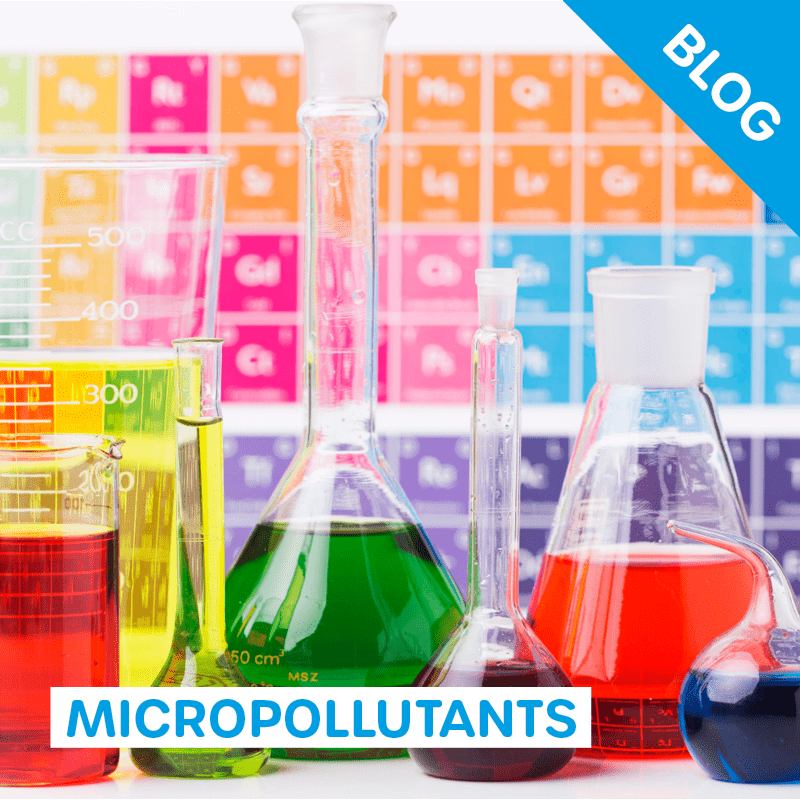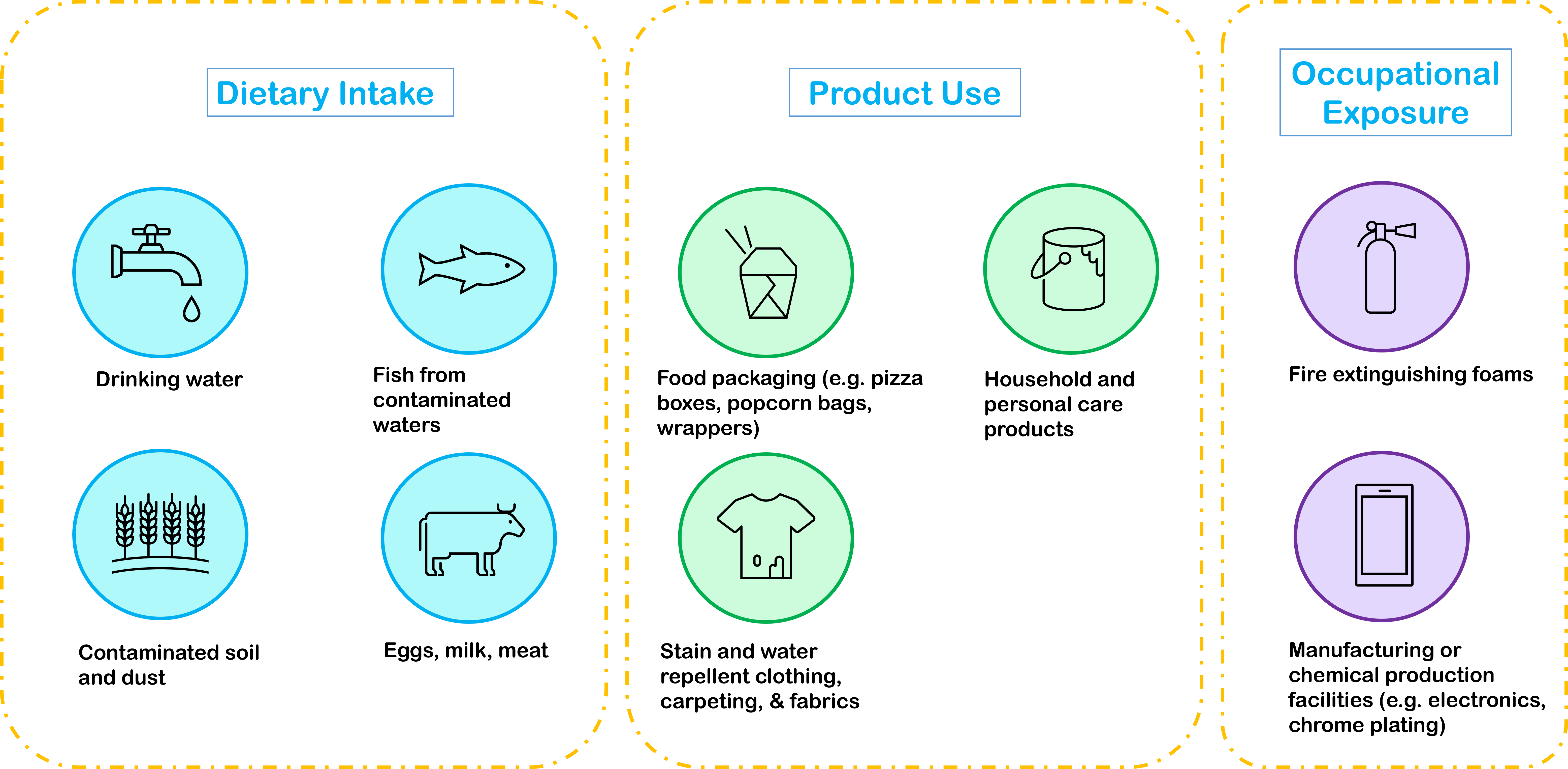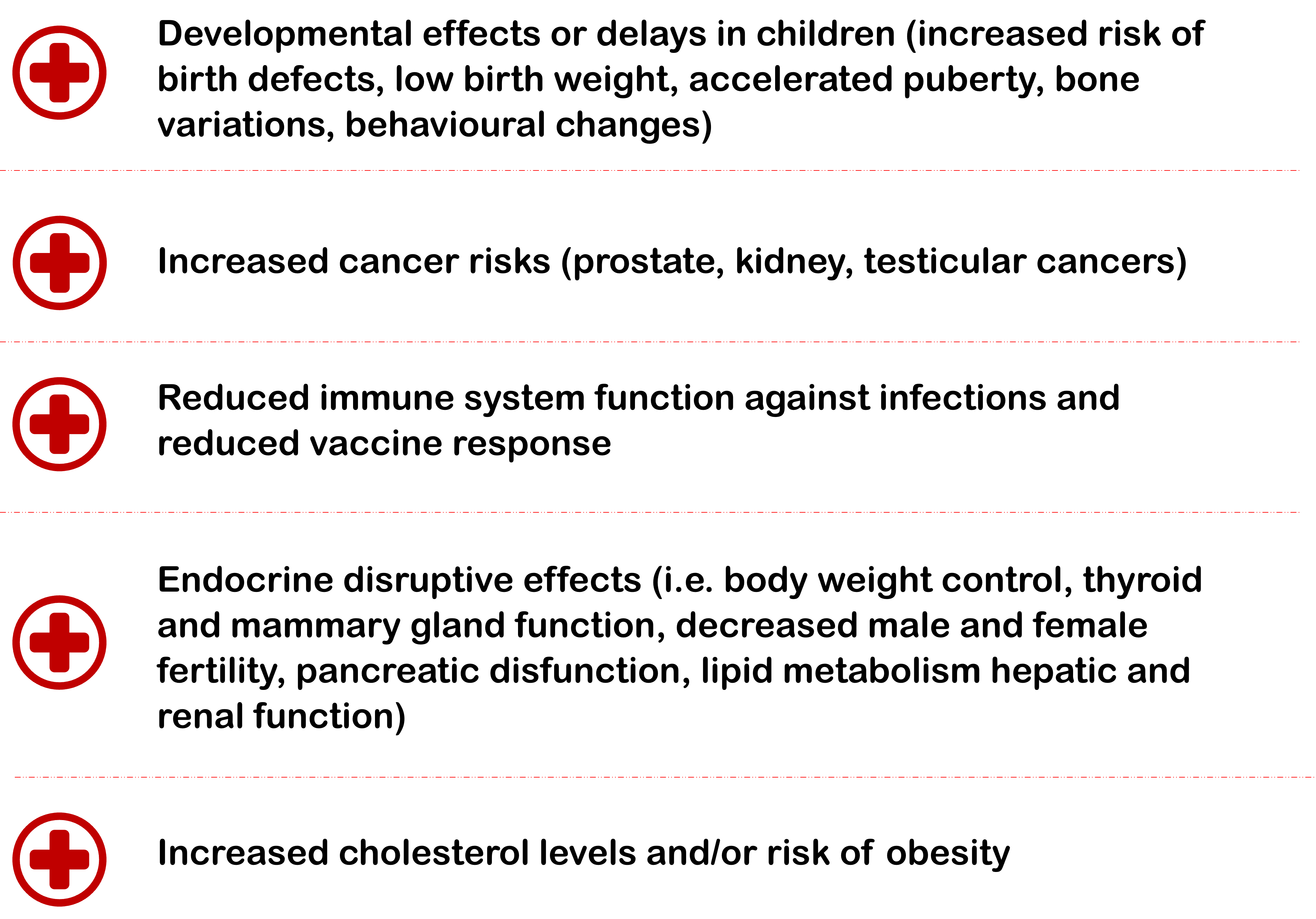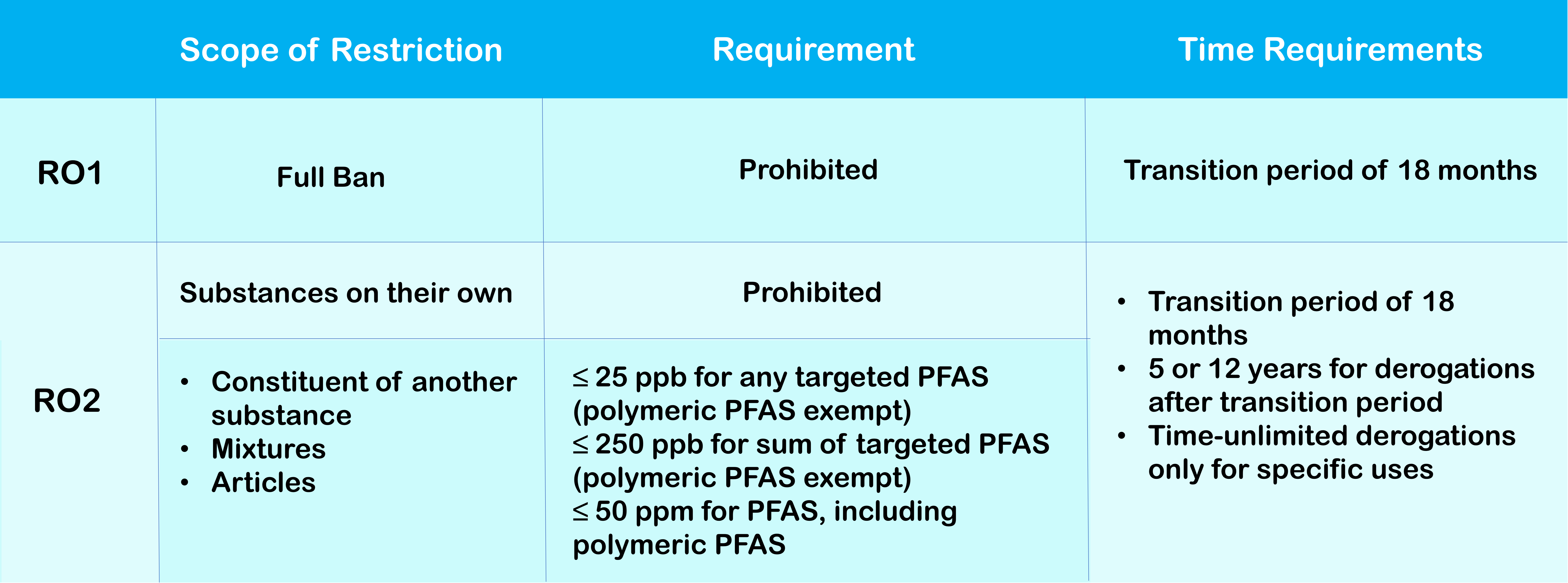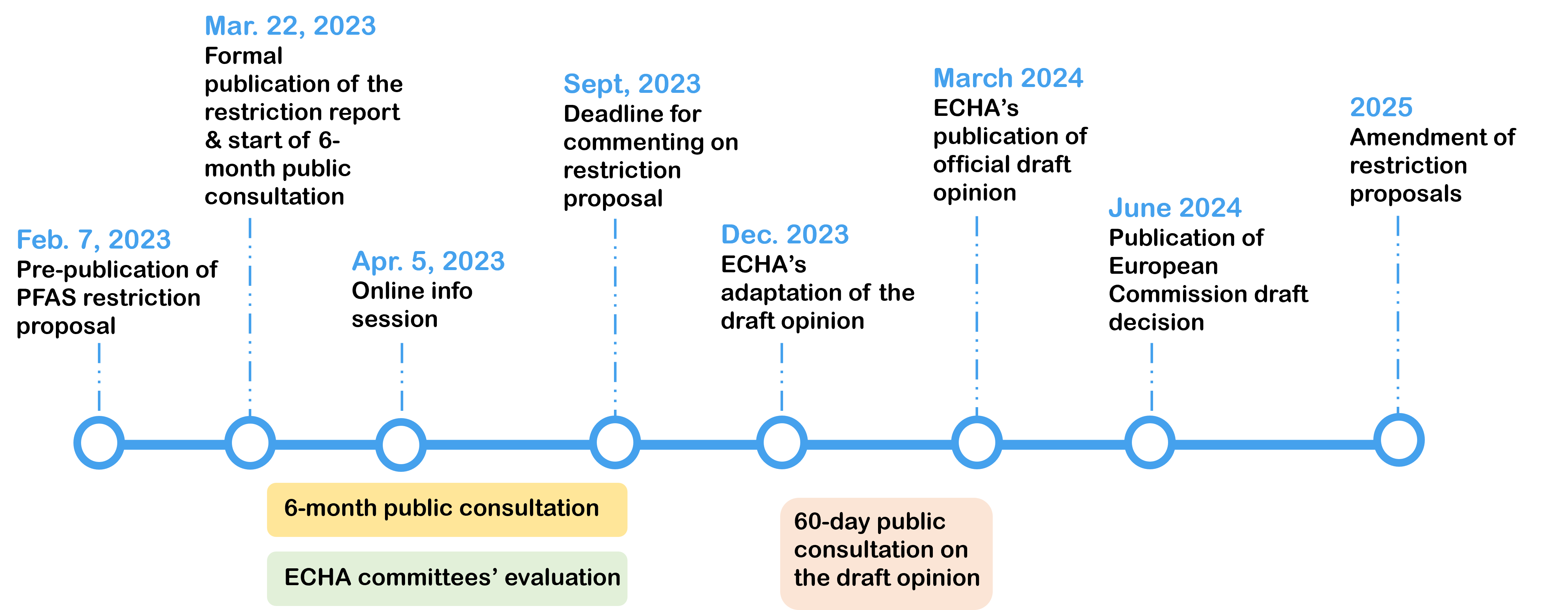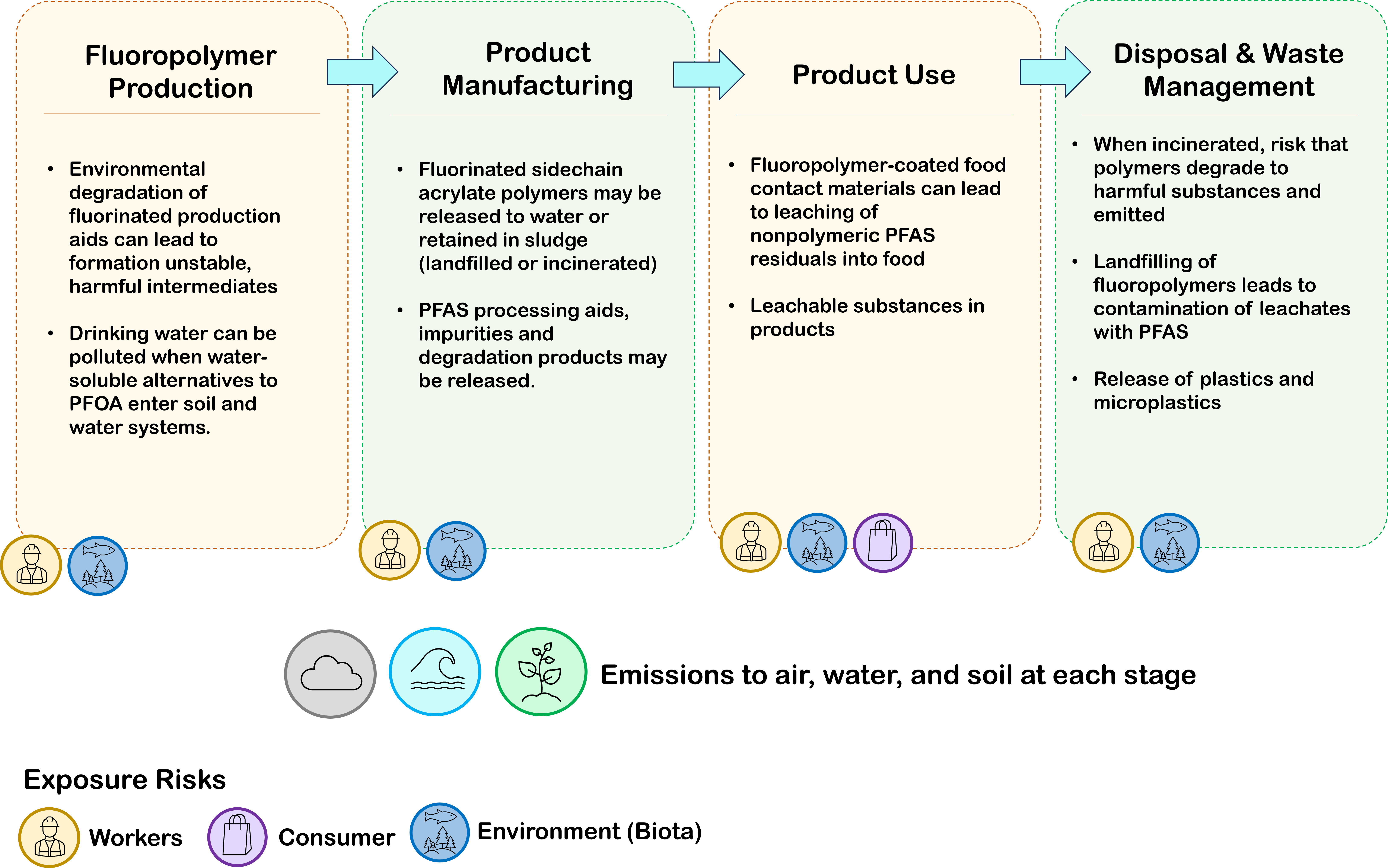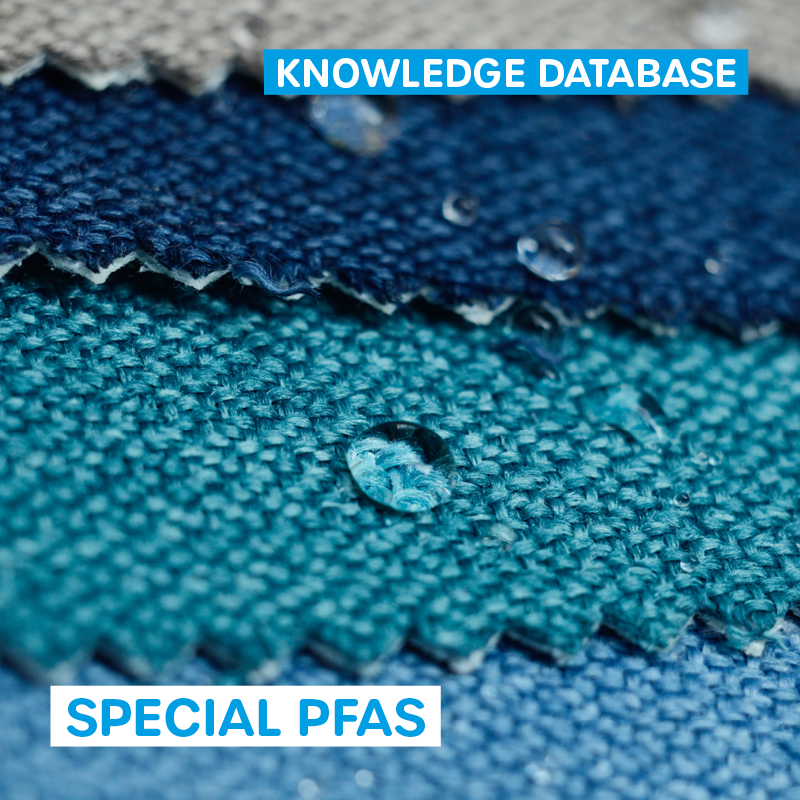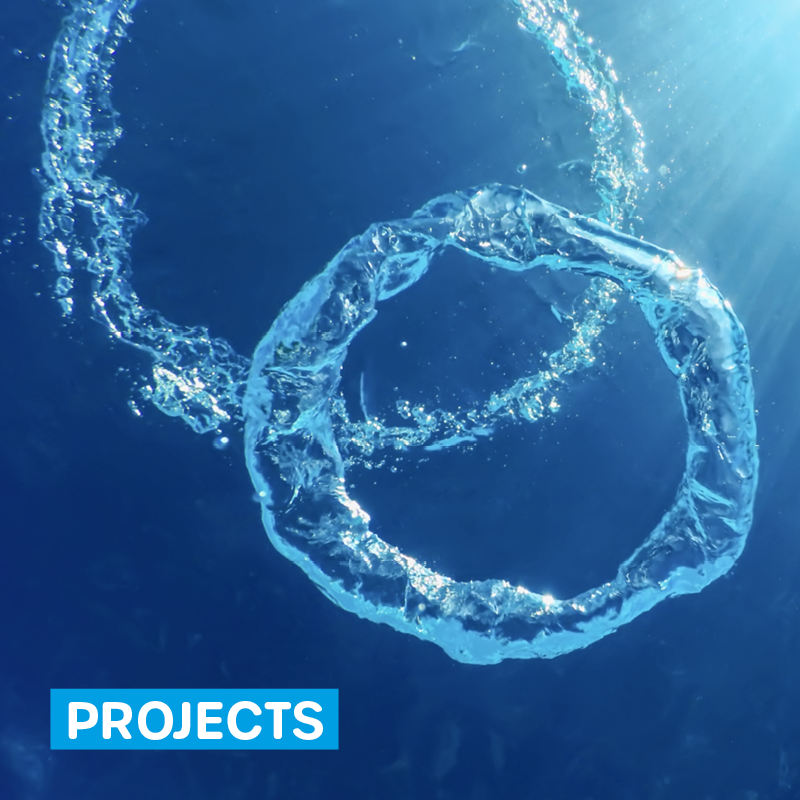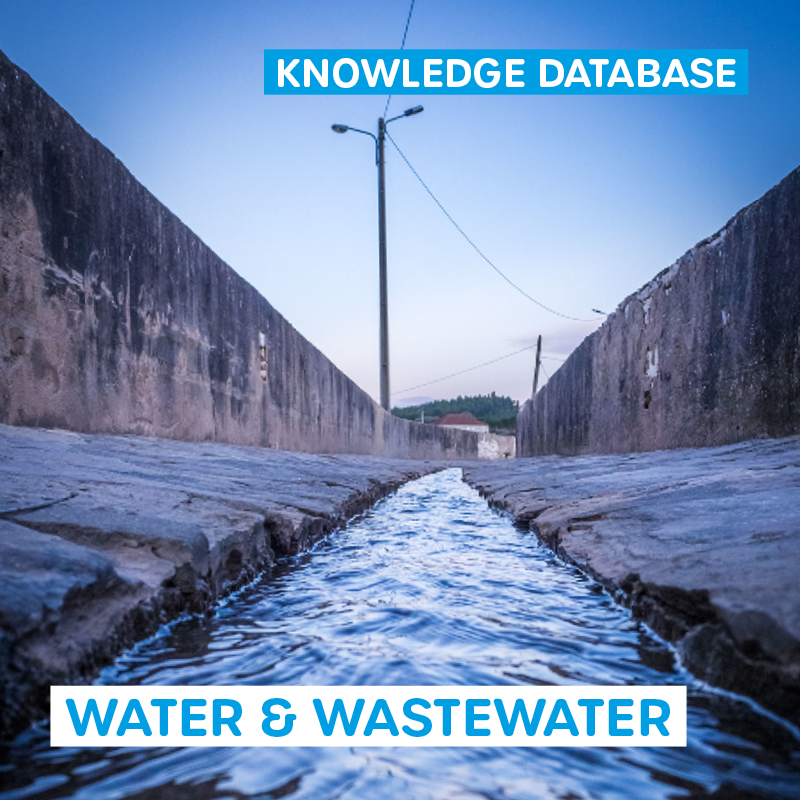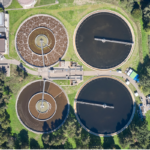
Microplastics in wastewater treatment plants
8. January 2024
Microplastics in industrial wastewater
2. February 2024
Microplastics in wastewater treatment plants
8. January 2024
Microplastics in industrial wastewater
2. February 2024Forever chemicals: PFAS and Fluoropolymers (2/2)
Per- and polyfluoroalkyl substances (PFAS) – synthetic “forever chemicals” – have become a substantial and pervasive global challenge. As part 1 of our blog series discussed – PFAS are persistent pollutants and have multiple entry pathways into the environment. They have managed to infiltrate diverse ecosystems, contaminate water sources, and accumulate in human bodies. They have numerous significant adverse effects on human health, thus acting now to unravel the complexity of the PFAS problem and implement effective solutions is critical to prevent further accumulation in the environment and secure a healthier future for generations to come.
Our second part of our PFAS stories takes a closer look at the health risks caused by PFAS and the EU’s recently proposed restrictions.
What are the main exposure routes and health impacts for humans?
PFAS have been detected in the blood serum of up to 99% of the population. The main PFAS exposure route for the general population is through:
PFAS are readily absorbed in the body and can bind to proteins. They are then distributed to protein-rich tissues such as the liver, kidneys, and blood. The estimated half lives of PFAS in the human body ranges from a few days to over 10 years. But the current understanding of biological impacts is based primarily on studies on only four degradation products, including PFOS and PFOA. Current peer-reviewed scientific studies indicate that exposure to certain PFAS levels can result in long-term health hazards, including:
The health risks depend on many factors, including conditions of exposure (dose/concentration, duration, route of exposure, etc.) and individual characteristics (age, sex, health status, genetic predisposition).
Knowing how toxic they can be, has any action been taken until now?
PFOA and PFOS have been banned in many areas due to the numerous negative health risks. These have slowly been replaced by shorter-chained PFAS, such as fluorinated ethers (e.g. GenX), as they move more quickly through the human body. But despite industry claims that they are non-toxic, various independent studies found they have similar physical and chemical properties and similar health effects as the PFAS they are replacing.
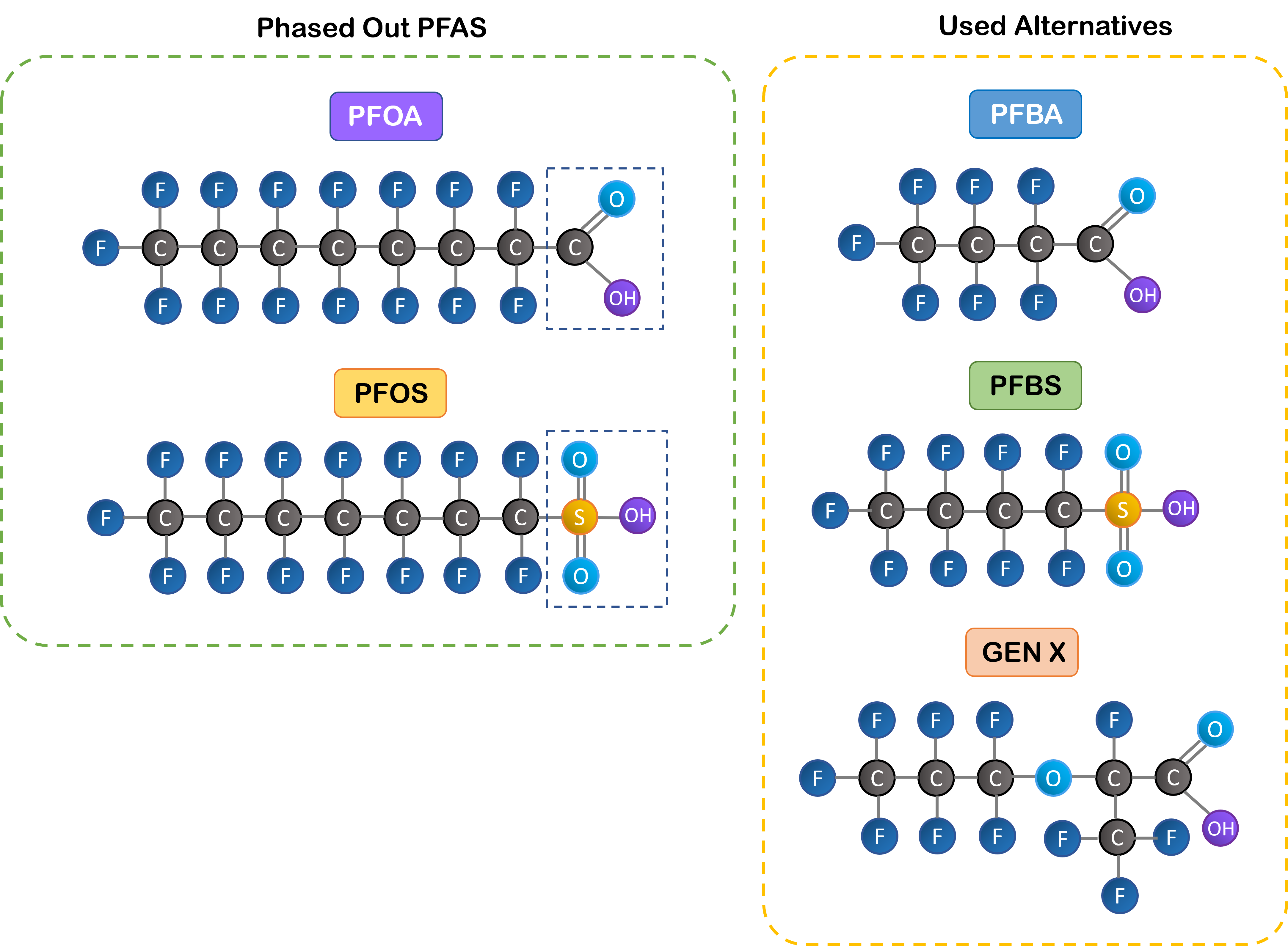
Chemical structures of two of the most common PFAS that are now phased-out in many regions and the alternative short-chain PFAS that are being used in their place. © Wasser 3.0
For example, the chemical structures of PFOA and GenX are very similar, but GenX was not sufficiently tested before being released to the market. Researchers found, that Gen-X has a similarly high persistence and mobility, accumulates in waters and soil, and similar negative effects on both human health and the environment..
Because adequate restrictions and regulations are not in place, the chemical industry can release such substances to the market without testing and proving whether they are harmful; instead, environmental agencies must take on this burden after substances are already released and in use.
What legislations are on the horizon?
Let´s summarize the actions with the words of Dr. Kleimark on PFAS use and restrictions
“If you really want change, then you need regulation, because that’s what companies will actually act upon”
But step by step.
In February 2023, the European Chemicals Agency (ECHA) proposed a broad restriction (covering >10,000 PFAS substances) with the initiative led by four countries: the Netherlands, Germany, Sweden, and Denmark. The “key hazardous property” of all PFAS in the scope of the restriction proposal is that they are either very persistent or degrade into very persistent PFAS in the environment. The following concerns associated with PFAS are also given:
- Bioaccumulation
- Mobility
- Long range transport potential
- Accumulation in plants
- Global warming potential
- Ecotoxicity
- Endocrine activity and effects on human health
The proposal includes two potential restriction options (RO1 and RO2), and is anticipated to come into effect by 2025:
A full ban (i.e. RO1) would effectively prevent companies from replacing longer-chain PFAS with a slightly different chemical that results in the same health problems as the one its replacing (i.e. preventing substances like Gen-X from being released). The proposal considers 14 main applications of PFAS:
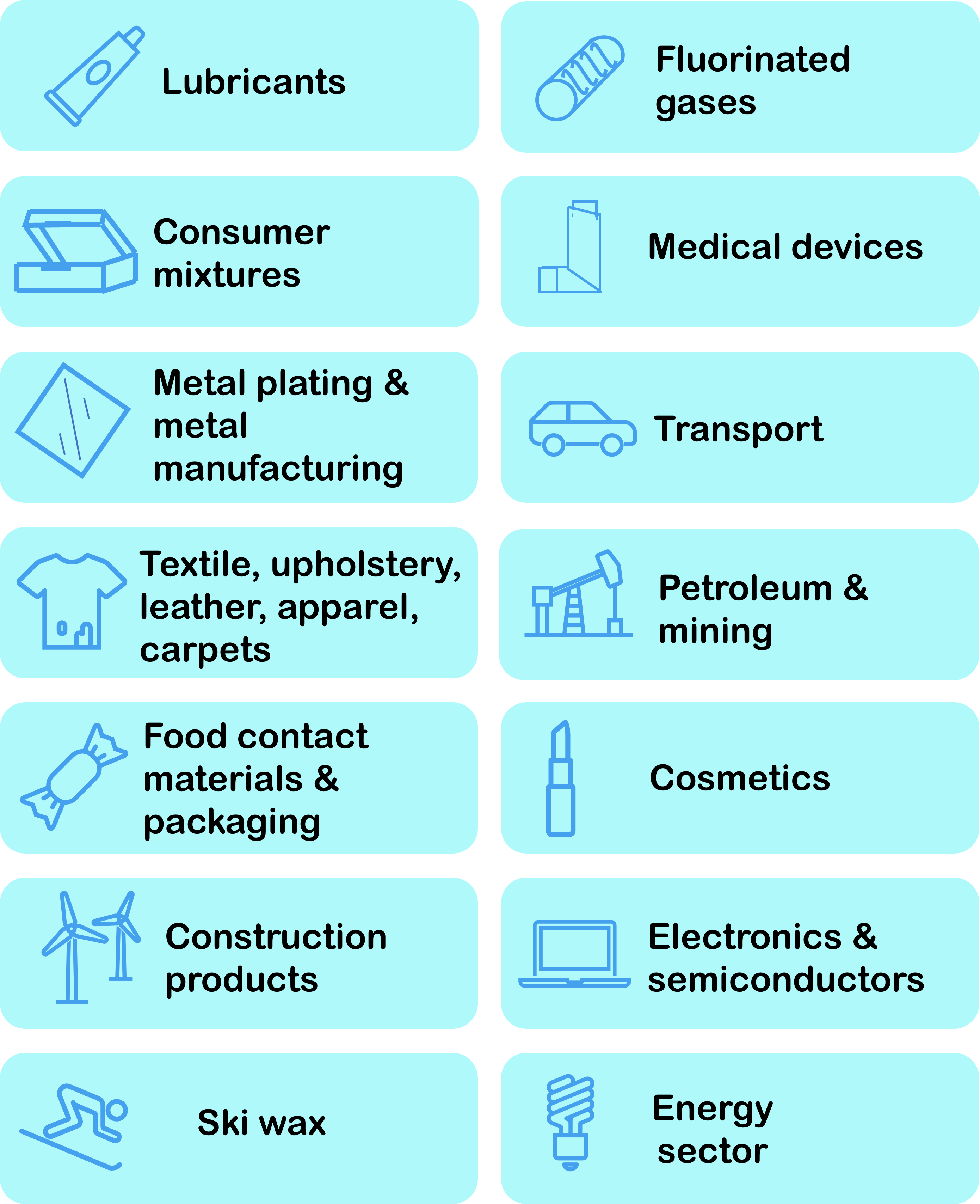
Summary of the 14 main applications of PFAS © Wasser 3.0
Within each application, specific sectors and uses have been proposed for an immediate PFAS ban due to strong evidence for existing technically and economically feasible alternatives (e.g. home textiles, consumer cookware, wind turbine blade coating, cosmetic sector as a whole, ski wax sector as a whole, among many others). Where PFAS are regulated under other EU regimes, derogations are not time limited (e.g. active substances in plant protection products and human and veterinary medicinal products).
What are fluoropolymers and why are they being considered separate from other PFAS?
Many companies claim that fluoropolymers, a distinct subset of PFAS that have fluorine atoms directly attached to their carbon-only polymer backbone, are a low-risk for human health and the environment. Thus, one restriction option (RO2) includes a derogation that would only ban fluoropolymers in mixtures where their concentrations exceed 50 ppm. But this is a topic of large debate. The large molecular size and unique properties of fluoropolymers distinguish them from other PFAS (which often have less than 14 carbon atoms). They are described as nearly chemically inert, non-wetting, non-stick, biocompatible, and resistant to temperature, fire, and weather (air, water, sunlight).
The group of fluoropolymers is dominated by polytetrafluoroethylene (PTFE), more commonly known as Teflon; it makes up half the market and is also used in products such as ski wax, car interiors and dental floss. According to industry.
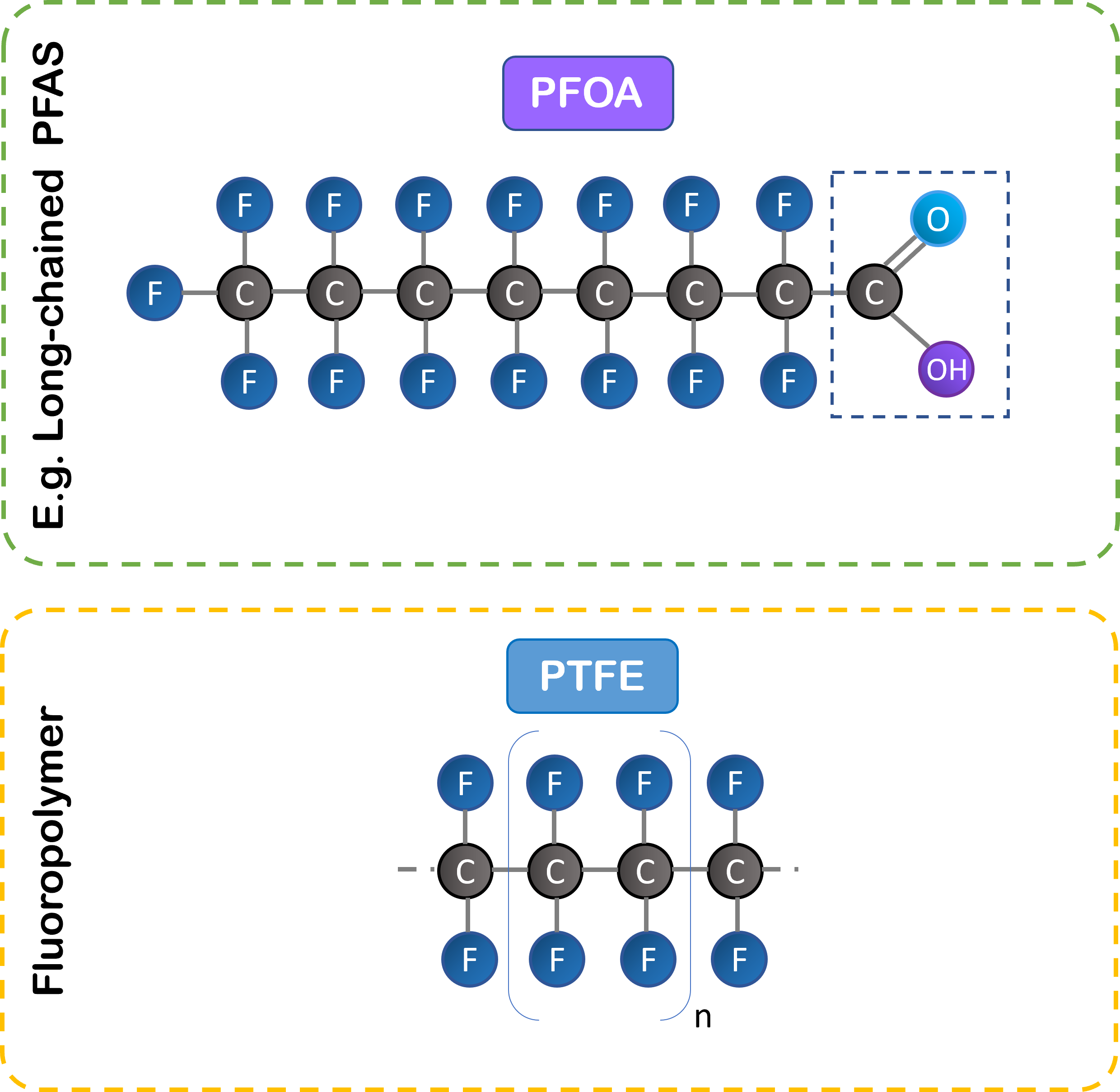
Chemical structure of PFAS vs PFTE © Wasser 3.0
Approximately 51,000 tonnes of fluoropolymers are produced in the EU each year, and approximately 320,300 tonnes globally. Often, only fluoropolymer articles (finished articles that have fluoropolymer products incorporated in them) are considered when assessing their toxicity. But when addressing the toxicity of a substance, you can’t just consider the final product, you also have to consider both the production and the disposal.
PFAS along the fluoropolymer lifecycle
Low-molecular-weight PFAS have been used for decades as polymer processing aids to produce many fluoropolymer substances. Previously, long-chained PFAS such as PFOA and PFNA were the most widely used in these processes, resulting in high exposure of production workers and the environment. It is the main cause of PFOA and PFNA found in the environment globally today.
Environmental contamination can also occur during the manufacturing of fluorinated polymers into final products, or through disposal of fluoropolymer scrap (e.g. PTFE scrap from machining operations is broken down into micro-powders (2-20 µm). Disposing of fluoropolymers in landfills poses further risks – they can result in contamination from leachates and also release microplastics, as fluoropolymer particles disintegrate into microplastics through weathering and physical stress. Fluoropolymer based microplastics are extremely persistent in the environment and can release short chained PFAS during degradation processes.
Further, PTFE begins to degrade at temperatures > 450 ˚C, releasing hazardous substances such as hydrofluoric acid, but little is currently known about whether standard municipal solid waste incinerators can destroy fluoropolymers without emitting harmful PFAS substances.
So, what is the way forward?
To avoid the release and accumulation of PFAS in the environment, including along the fluoropolymer lifecycle, PFAS need to be stopped at the source (i.e. at production and manufacturing sites), and effective restrictions on their production and use, along with new, innovative methods to effectively remove both fluoropolymer-based microplastics and non-polymeric PFAS from water and wastewaters are required.
The restrictions proposed by ECHA are an important step towards phasing out PFAS use. Implementing the proposed restrictions will force companies to find alternatives, however, stating that fluoropolymers are of “low-concern” and exempting them from restrictions does not seem justifiable based on current evidence.
Fluoropolymers are often assessed based only on their use phase; the emissions and impacts along the entire life cycle (production and disposal) are typically neglected. But harmful PFAS substances are often released during both production and disposal and many new short-chain PFAS substances used to produce fluoropolymers have been found to be as toxic as the substances they replaced. Thus, the entire life cycle must be considered when determining how fluoropolymers will be managed. If they are not restricted for all non-essential uses, the extreme persistence of fluoropolymers and emissions along the value chain results in a high likelihood of human exposure and increased health risks.
But currently, PFAS continue to be released, particularly through industrial and municipal wastewater streams. Therefore, effective detection and removal methods are critical to understand and prevent their entry into the environment.
What role does Wasser 3.0 play in tackling PFAS contamination?
In our laboratories, we work on the detection of PFAS and conduct feasibility studies on innovative PFAS removal approaches, including our Wasser 3.0 PE-X® technology, for various pollution parameters and water properties and adapt it to individual requirements and continuous operation. We consider economic, ecological, and social parameters equally and can easily adapt set-up and experimental protocols and units according to the data and information obtained from batch and continuous operation trials.

Implementation steps for PFAS removal, from feasibility study through to on-site application of rental models.

